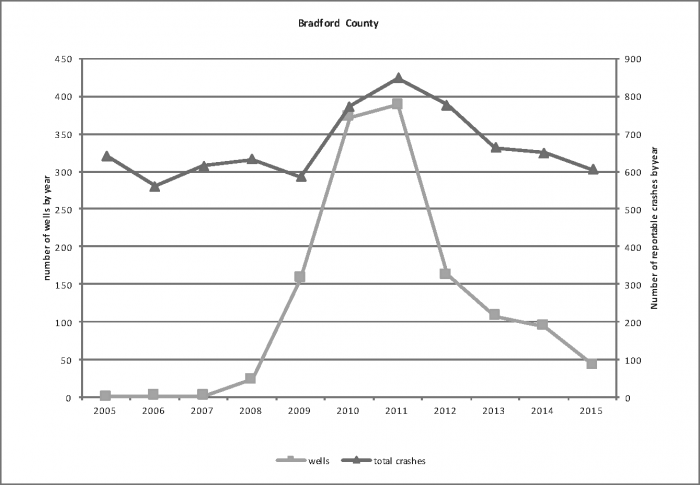Example Study 2
Traffic Impacts of Marcellus Shale Development
One of the primary concerns associated with Marcellus Shale development is traffic. The use of trucks and large machinery in the development of well sites has lead to complaints about truck traffic and road safety. This study (Brasier & Perchinski 2016) funded by the Center for Rural Pennsylvania examined three indicators of traffic accidents (total crashes, heavy truck crashes, and crashes with one or more fatalities) in relation to Marcellus Shale development. Data on total reportable crashes, heavy truck crashes, and total crashes resulting in one or more fatalities was secured from PennDOT, and analyzed at the county level.
The study is longitudinal (including crash rates from before and during development), comparative (including counties with and without development) and uses control variables, such as daily vehicle miles traveled, which could affect crash counts.

Overall, the study found that counties with Marcellus Shale development had higher total crash rates than those without. Furthermore, the most rural counties with the highest level of development had increased rates of total crashes and heavy truck crashes, with the peak of crash rates occurring during the years of highest activity (2009-2011).